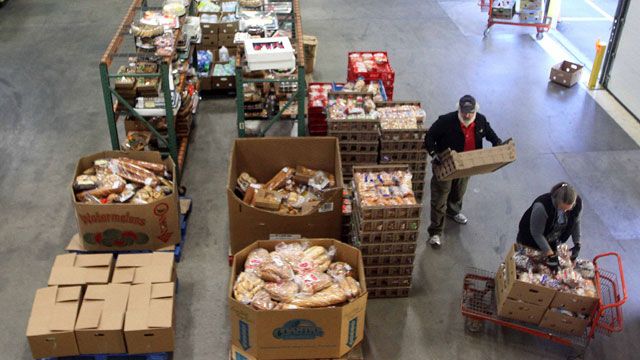We’re proud to collaborate with The Nation in sharing insightful journalism related to income inequality in America. The following is an excerpt from Nation contributor Greg Kaufmann’s “This Week in Poverty” column.

This Friday, 48 million people — including more than 21 million children — will see their food stamp (SNAP) benefits reduced. Instead of receiving an average of a buck-fifty for a meal, individuals in need of food assistance will get about $1.40. For families of three, the cut means they will receive $29 less in food stamps every month.
Tianna Gaines-Turner recently described the impact of cuts like these in written testimony she submitted to Congressman Paul Ryan’s War on Poverty hearing: “Cutting a person’s benefits by $10, or $15, or $20 might not seem like a lot to legislators, but it would cut meals out completely for families like mine.”
Families like hers are families with two working parents earning low wages while trying to support three children. Ms. Gaines-Turner is employed by a childcare provider and her husband works the deli counter at a grocery store.
The SNAP cuts come at a time when 49 million people — about 14.5 percent of all US households — are food insecure. That means they don’t have enough money to meet their basic food needs, and don’t necessarily know where their next meal is coming from. The Institute of Medicine already demonstrated the inadequacies of the SNAP allotment for hungry families even before this cut.
What are we to make of this — the timing of the cut, the lack of discussion about it on the Hill, and the fact that it will deliver yet another blow to people who are already among the most vulnerable citizens in our nation?
It all points to the same hard truth we see time and again: when it comes to responding to the struggles of the more than one in three Americans who are living below twice the poverty line — on less than about $36,600 annually for a family of three — we prefer to look the other way. Even as the interests of low-income people and the middle-class converge — for example, the need for good jobs and fair wages, access to continuing education, a more equitable economy where 95 percent of the gains don’t go to the top 1 percent, and a safety net that is available in tough times or when jobs pay lousy wages — we still find that a SNAP cut like this can occur with hardly a whisper of protest (outside of the advocacy community) at a time when hunger is widespread.
What is most frustrating, of course, is how easily we could move in a better direction.
In 2007, when the Half in Ten campaign to cut poverty by 50 percent over ten years was launched, the Urban Institute found that implementation of just four of the campaign’s many recommendations would result in a 26 percent reduction in poverty. (At the time, there were 37 million people in poverty, so it would have meant lifting 9.5 million people out of poverty over ten years.) The four recommendations included a modest increase in the minimum wage, expanding the Earned Income Tax Credit and Child Tax Credit (which lifted 9.4 million people above the poverty line in 2011), and guaranteeing childcare assistance to low-income families (tough to go to work when there is no reliable and affordable place for childcare).
We didn’t move in that direction and we continue to move in the wrong direction today. Food stamps lifted a record 4 million people above the poverty line in 2012, but benefits will be cut on Friday and both the House and Senate are deliberating further cuts in Farm Bill negotiations.
Unemployment insurance (UI) lifted 1.7 million people above the poverty line in 2012. But in 2011, it lifted 2.3 million people, and 3.2 million in 2010. Arloc Sherman, senior researcher at the Center on Budget and Policy Priorities, noted that “we pulled back too quickly on unemployment insurance” and if we hadn’t “there would be a million fewer poor people today.” Instead, Sherman writes, “the number of UI recipients for every 100 unemployed workers fell from 67 in 2010 to 57 in 2011 and 48 in 2012.” Why? Because some states cut back the number of weeks people are eligible for regular, state-funded UI benefits; and Congress provided fewer weeks of federal UI benefits for long-term unemployed workers.
If we can’t even get good policy for unemployed workers in the aftermath of the Great Recession, or for hungry people at a time when there is a proliferation of low-wage work, then how in the world can we possibly expect to win on issues like investing in affordable housing, ending child hunger, or making post-secondary education available for all?
It’s time to stop bemoaning “the lack of political will” to take on poverty and focus on what we are doing to create that political will. Because no matter how great a speech someone delivers, or how compelling a study someone conducts, or how smart the talking points are for those advocating for good policy, or how many twitter storms, e-mails, or online petitions we push — there will be no significant change without a truly broad-based movement along the lines of what we are seeing with immigration reform and marriage equality.
Otherwise, expect the advocacy community to always be playing defense and the most vulnerable people to keep paying the price for it.


